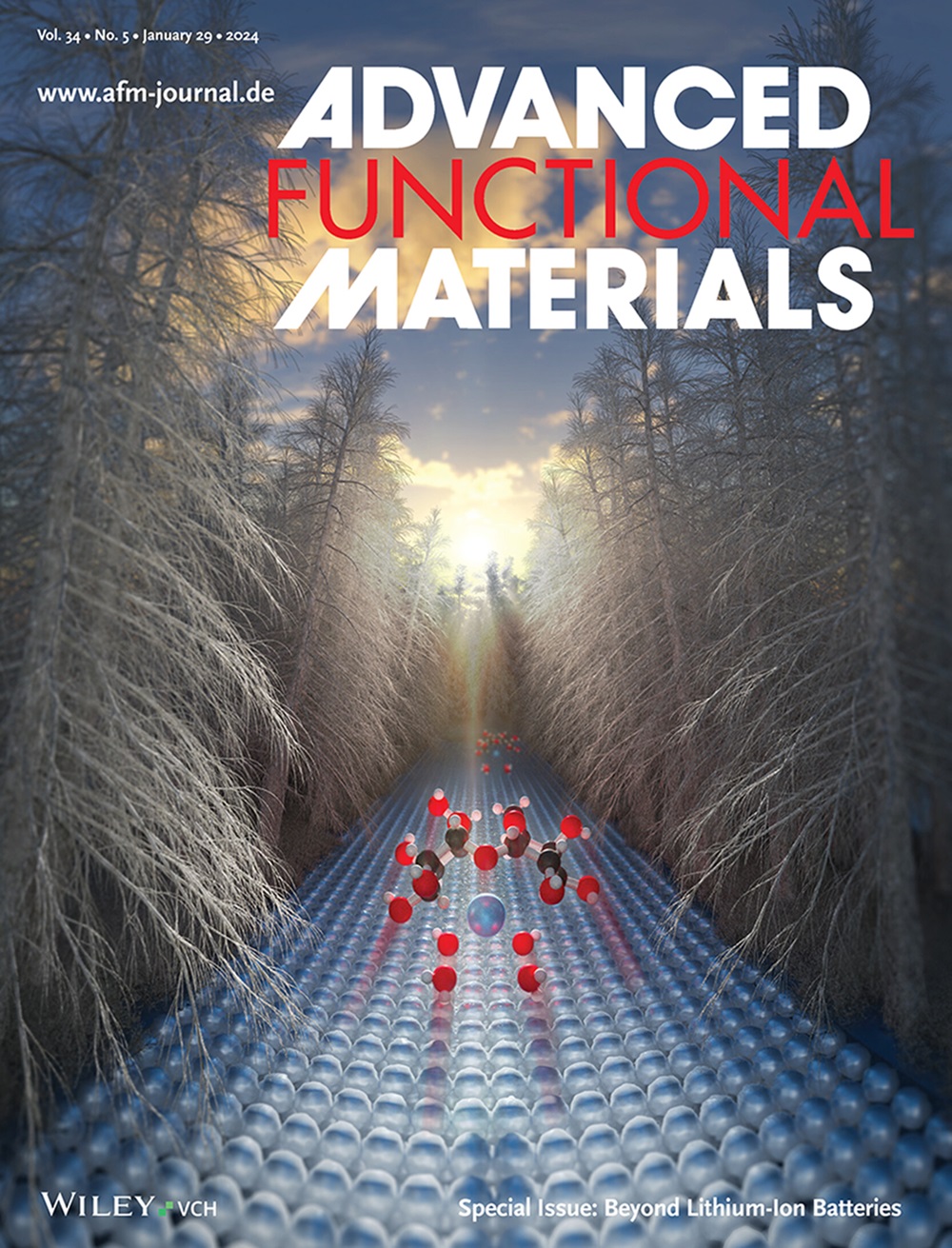自插层铁磁体Cr1.61Te2的面内磁各向异性和大拓扑霍尔效应
IF 19
1区 材料科学
Q1 CHEMISTRY, MULTIDISCIPLINARY
引用次数: 0
摘要
自插层碲化铬Cr1+xTe2由于其高温铁磁性、可调自旋结构和空气稳定性而受到越来越多的关注,所有这些都对下一代存储和信息技术的多功能应用至关重要。本文报道了自插层Cr1.61Te2单晶的强磁各向异性和大拓扑霍尔效应(THE),这是未来自旋电子应用中非常理想的特性。结果表明,Cr1.61Te2是一种具有强平面内磁各向异性的软铁磁体。值得注意的是,在不同温度下观察到不同的THE行为,反映了复杂的自旋结构和相互竞争的交换相互作用。更有趣的是,由微观非共面自旋结构引起的大拓扑霍尔电阻率在70-240 K温度范围内出现,在150 K时达到最大值0.93µΩ cm。此外,在低于≈70 K的低温下,观察到符号反转和弱THE,表明出现了具有相反拓扑电荷的额外拓扑自旋结构。这项工作不仅为Cr1+xTe2系统中磁晶各向异性和拓扑现象之间的相关性提供了有价值的见解,而且还为复杂自旋织构的工程演变提供了一个强大的平台,可以在各种自旋电子器件应用中利用。本文章由计算机程序翻译,如有差异,请以英文原文为准。
In‐Plane Magnetic Anisotropy and Large Topological Hall Effect in Self‐Intercalated Ferromagnet Cr1.61Te2
Self‐intercalated chromium tellurides Cr1+ x 2 have garnered growing attention due to their high‐temperature ferromagnetism, tunable spin structures and air stability, all of which are vital for versatile applications in next‐generation memory and information technology. Here, strong magnetic anisotropy and a large topological Hall effect (THE) in self‐intercalated Cr1.61 Te2 single crystals are reported, which are both highly desirable properties for future spintronic applications. These results demonstrate that Cr1.61 Te2 is a soft ferromagnet with strong in‐plane magnetic anisotropy. Remarkably, distinct THE behaviors are observed in different temperature regimes, reflecting the intricate spin structures and competing exchange interactions. More interestingly, a large topological Hall resistivity, induced by microscopic non‐coplanar spin structures, emerges in the temperature range 70–240 K, reaching a maximum value of 0.93 µΩ cm at 150 K. Moreover, a sign‐reversed and weak THE is observed at low temperatures below ≈ 70 K, indicating the emergence of an additional topological spin structure with opposite topological charges. This work not only offers valuable insights into the correlation between magnetocrystalline anisotropy and topological phenomena in Cr1+ x 2 systems, but also provides a robust platform for engineering the evolution of complex spin textures that can be leveraged in diverse spintronic device applications.
求助全文
通过发布文献求助,成功后即可免费获取论文全文。
去求助
来源期刊

Advanced Functional Materials
工程技术-材料科学:综合
CiteScore
29.50
自引率
4.20%
发文量
2086
审稿时长
2.1 months
期刊介绍:
Firmly established as a top-tier materials science journal, Advanced Functional Materials reports breakthrough research in all aspects of materials science, including nanotechnology, chemistry, physics, and biology every week.
Advanced Functional Materials is known for its rapid and fair peer review, quality content, and high impact, making it the first choice of the international materials science community.
 求助内容:
求助内容: 应助结果提醒方式:
应助结果提醒方式:


